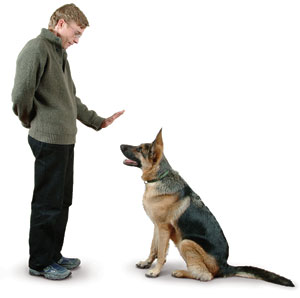Getting a trained dog isn't exactly like having a balanced dog, but if your Dog knows a few basic commands, it may be helpful when handling problem behaviors - present ones or the ones that can grow in the future.
Where do you start with dog training Pittsburgh? You could take a class, But it is not mandatory; you can do it yourself. In fact, with the right mindset, it may be fun for both you and your dog!

Sit
This is only one of the simplest dog obedience commands to teach, so it is a good one to start with.
Hold a treat near your puppy's nose.
Move your hand up, allowing his mind to follow the treat and causing his butt to lower.
Once he's in sitting position, say "Sit," give him the cure, and discuss affection.
Every day until your puppy has it mastered. Then ask your dog to sit before mealtime, when departing for walks, and throughout other situations in which you would like him relaxed and calm.
Come
Once he's mastered it with the Leash, eliminate it - and practice the control in a secure, enclosed area.
Down
This may be one of those harder commands in dog obedience training. Why? Since the position is a submissive posture. You can help by keeping training relaxed and positive, especially with fearful or nervous dogs.
Locate a particularly good smelling cure, and hold it on your closed fist.
Hold your hand up for a dog's snout. When he sniffs it, then move your hands into the floor, so he follows.
Then slide your hands along the floor in front of him to promote his body to trace his head.
Once he's in the down position, state "Down," give him the treat, and share affection.
Repeat it every day. If your dog Attempts to sit up or lunges toward your hand, say "No" and take your hands off. Do not push him into a downward position, and encourage every step your puppy takes toward the ideal position. After all, he's working hard to find it out!
Stay
Before attempting this one, ensure that your dog is an expert in the "Sit" command.
Then open the palm of your hands facing you, and say "Stay."
Have a few steps back. Reward him with a treat and affection if he stays.
Gradually increase the number of steps you take before giving the treat.
Always reward your puppy for staying put - even if it's just for a few seconds.
This is a workout in self-control For your dog, so don't be discouraged if it takes some time to master, especially for dogs and high risk dogs. After all, they would like to be on the move and not just sitting there waiting.
Leave it
This can help keep your dog safe when his curiosity gets the better of him, like when he smells something intriguing but possibly dangerous on the ground! The objective is to teach your pup that he gets something even better for ignoring the other item.
Place a cure in both palms.
Prove him one enclosed fist using the treat inside, and say, "Leave it."
Let him lick, sniff, mouth, paw, and bark to try and get it - and ignore the behaviours.
Once he stops trying, give him the cure from the flip side.
Repeat until your dog moves away from the first fist once you say, "Leave it."
Next, only give your dog the treat when he moves away from that first fist and also looks up at you.
Once your dog consistently moves Away in the very first treat and gives you eye contact once you say the control, You are ready to take it up a notch. Because of this, use two separate treats -- one That's just all appropriate and one that is an especially good smelling and tasty Favored to your pup.















